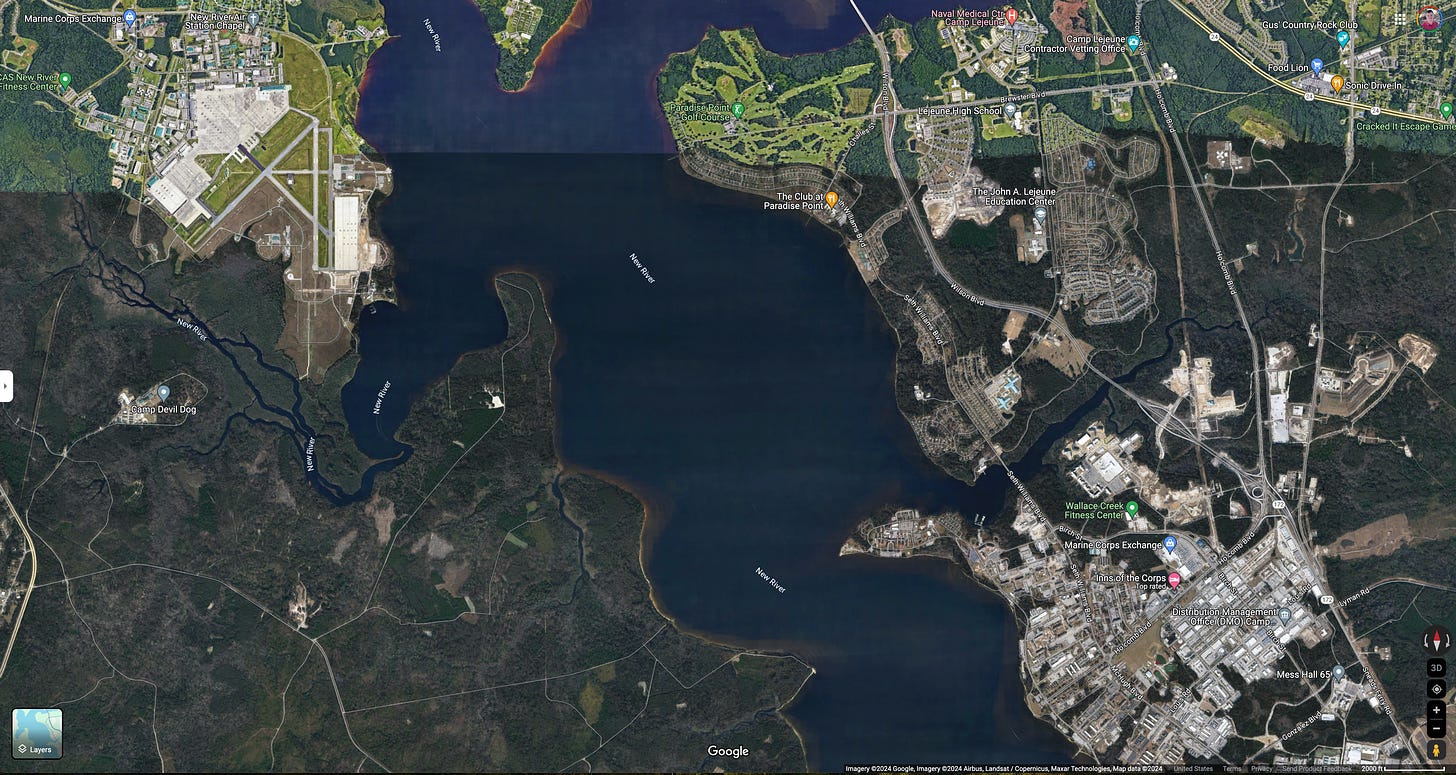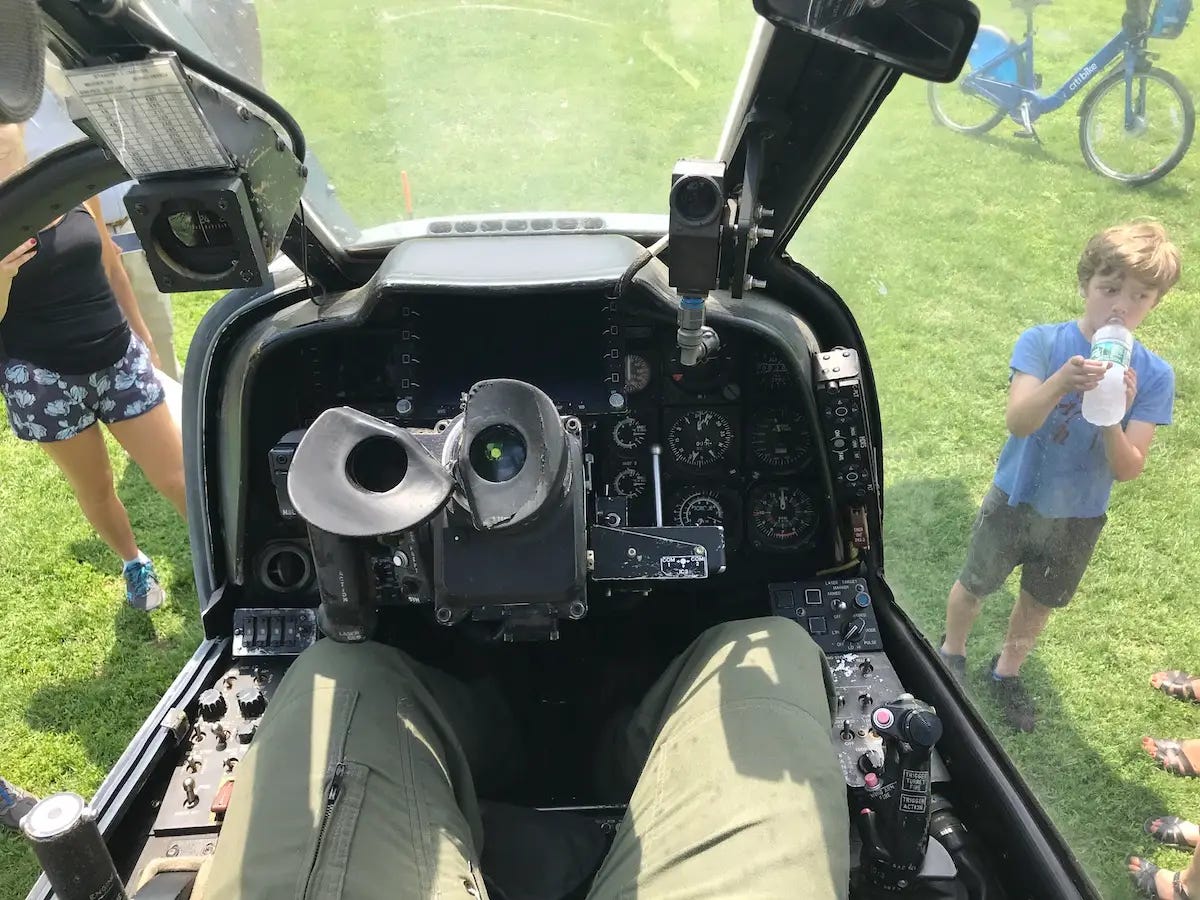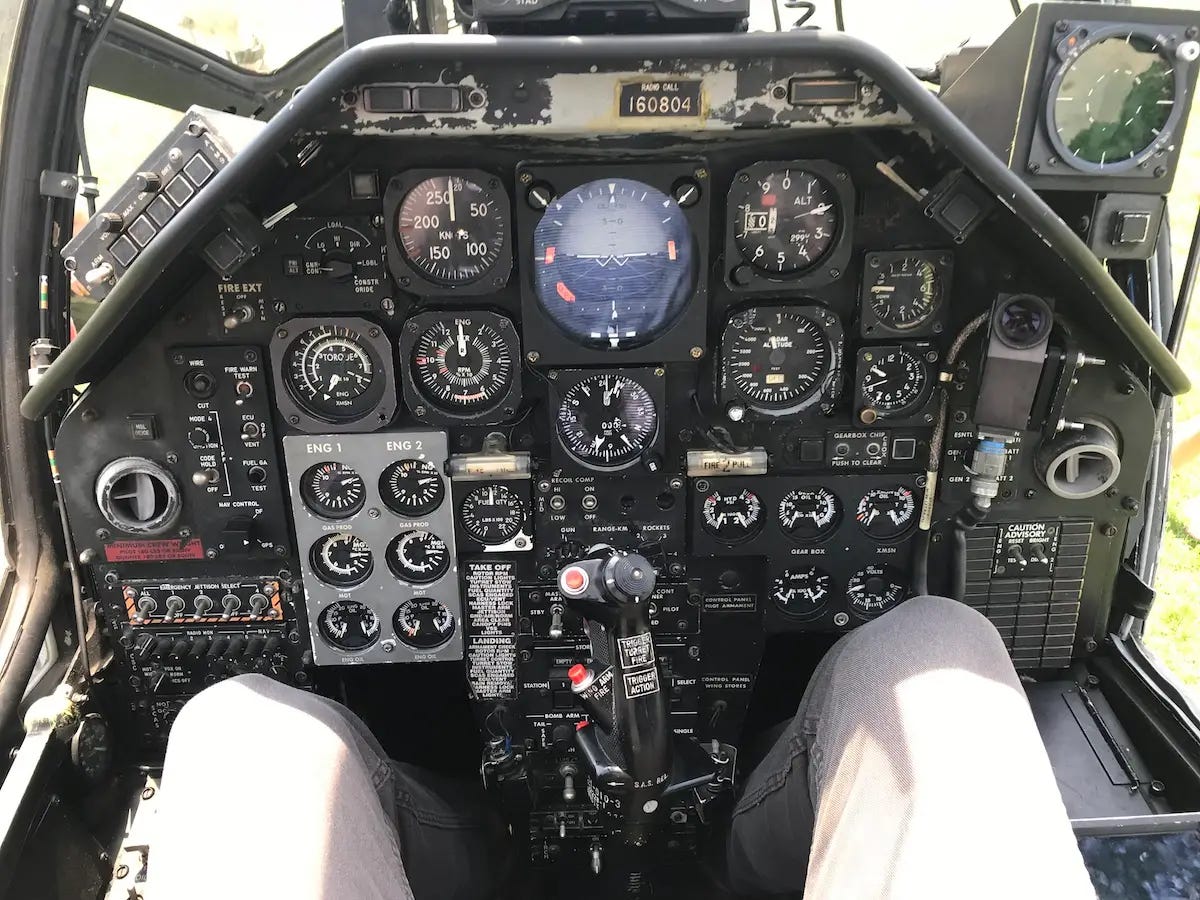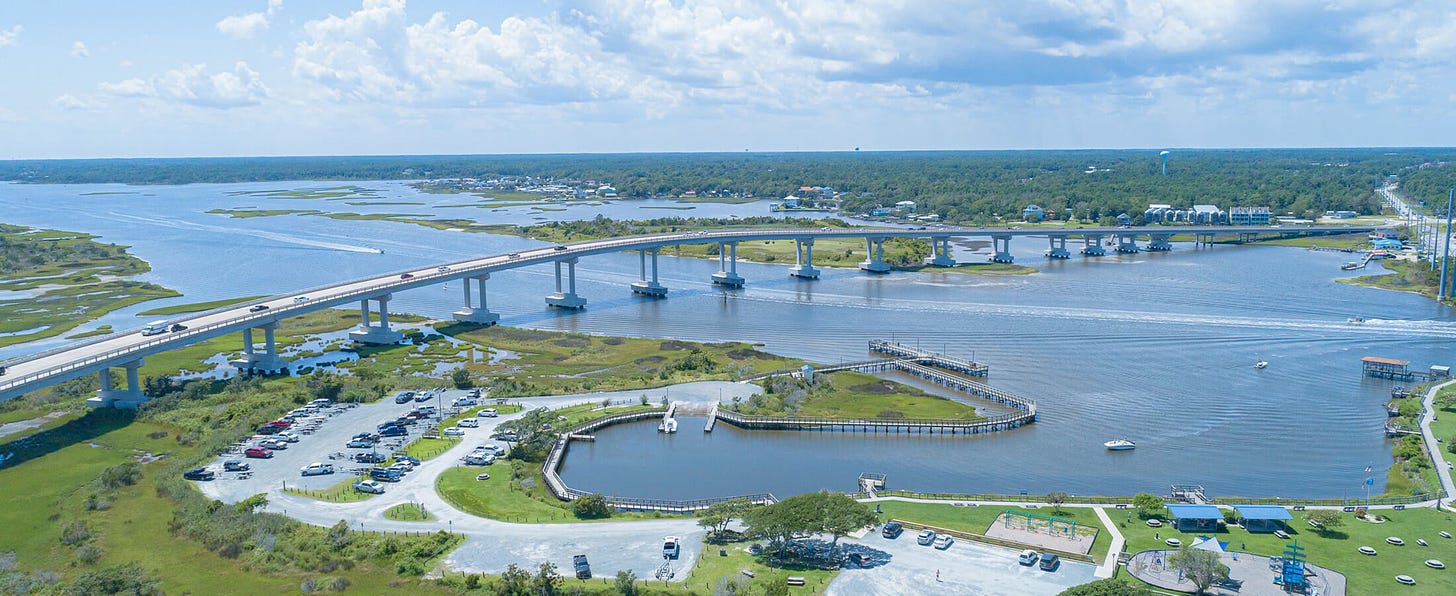The Are Only Two Kinds of Helicopter Pilots…
December 1993
I’ve been a student for so long, the Fleet is like a mythical Promise Land where there is only milk and honey and I will finally be an actual Marine helicopter pilot!
As soon as I check in, my new squadron sends me to station duty for a month: this is (evidently) the standard for new joins.
I spend a dreary December alternating the watch with another 1st Lieutenant also banished to Station Ops in order to ensure the Air Station’s single aircraft is greeted properly when it brings the occasional VIP for a visit. It’s rainy in December in North Carolina so there isn’t a ton of flying anyway. Mostly I read and study. I also spend time getting my local area maps ready so that when the blessed event of flying in a helicopter comes, I’m not the guy with the giant map bomb in the front seat trying to fold and refold it.1
By January, I’m done at the station and we’ve gotten the family settled into our apartment out in town. In the intervening month, friends have also arrived and checked in from leave. Our neighbors from flight school, other squadron-mates from Primary, or helicopter training, and/or HMT-303 arrive, or return, and suddenly we have a community - other couples with kids, people we’ve known, and we attend Super Bowl parties with our fellow Lieutenants and (newer) Captains. HML/A-269, Marine Aircraft Group-29, is now home.
Spring, 1994
I am no longer the “FNG” and flying the Whiskey Cobra begins in earnest.
We learn the course rules in and out of our airfield, which is abuzz with every helicopter in the Marine Corps inventory. Two complete Marine Air Groups fly here, so a carbon copy of our own Group, MAG-26, has multiple CH-46 squadrons, a CH-53E squadron, a Cobra/Huey squadron, plus the CH-46 Training Squadron (HMMT-204) is also located here. Our fixed-wing counterparts - Harriers and F/A-18s - are 50 miles north at MCAS Cherry Point.
Marine Corps Air Station (MCAS) New River sits right on the… New River, and winds generally come off of the water, so we primarily use runway 5-23.

Right off the numbers of runway 5 (Hdg 050 on the compass, to the NE), you’re over the water with officer base housing to your right. Hard right, climb out to 500’, report “Hospital Point Clear,” and you’re out of the Tower’s 5nm airspace control. As you head down river, on your left sits the Naval Hospital aboard Camp Lejeune, across the New River from us. Then you either head onto Lejeune proper - to your left - to a particular training area or landing zone, or follow the New River as it heads south and curls to the right. We cruise along at 140 knots or so, at 300 ft off the water. There is a small landing field low, left - a mockup of a ship’s deck - built right against the edge of the river to give us a place to practice shipboard landings (FCLP’s), with most of the pattern over the water. Continuing down the New River to Snead’s Ferry bridge you have to resist the temptation to fly under that sucker. It fairly begs for any helo pilot with a hair on his ass to do it, but I’d like to keep my wings and there is just too much air traffic - i.e. witnesses - to give that a shot. I have heard it has been done, but I don’t ask.2 There’s a guy in our squadron who’s a bit of a legend for getting shitfaced with another pilot and jumping off of the bridge into the River below.
Over the bridge and straight ahead is the New River Inlet - and the Atlantic stretches out to the horizon on a clear day. To the right - south along the North Carolina coast - is Topsail Island. Don’t go bombing over there low because a lot of pilots live out there and someone will get your tail numbers. To the left is Onslow Beach and more of Camp Lejeune - there’s an intercoastal waterway that is great for ripping along low and fast but sea birds and buzzards can be a hazard.
We spend a fair amount of time on fundamentals at some of the outlying fields (OLFs) in the area. We’ve learned a lot in the training squadron, but… now we’re among professional aviators, many veterans of the first Gulf War, and they’ve been doing this for a while. Some have also been flight school instructors, guys who are on their second tours, etc., and expectations are high for what one’s baseline competence in the aircraft is. We do something I happen to like - “boxes” and “low work” at the OLFs. Boxes are giant squares, 40 feet per side, painted on the ground. In flight school you first learn to hover within a box, and then slide along the edges, and pivot around the mast while in a hover, slide backwards along a line, and similar kinds of drills to develop feel for handling a skid helicopter while “air taxiing” close to the ground - in a 3-5’ hover. The Cobra is a Fleet helicopter, however, a massive beast compared to the 2800-3200 Bell-206’s we first learned squares in. Fully loaded, the Whiskey Cobra weighs 7 tons (Max Gross Wt 14,750 lbs. rack-to-rack), powered by massive engines, and so now we can do much, much mo’ better tricks.
Keep the tail in place and move the rest of the helicopter around it like we’re the hour hand on a clock - but this helicopter has a 48 foot rotor arc, is 58 feet long, and flying from the front seat is like being on the tip of a pencil. We do quick stops pivoting on the tail; do boxes with the nose being the pivot; we do all manner of neat stuff and our “instructors” are now also colleagues and friends - and they care about making us better because we’re training to go to war together.
The front seat doesn’t have a stick between your legs like the back seat does… like a normal helicopter does. Up front, the cyclic is a pistol grip, stubby version of the top of the normal stick, with a 7 to 1 mechanical advantage when flying from the front seat. i.e. One inch of movement by my right wrist is equivalent to 7 inches of travel on the cyclic in back. Flying squares from the front takes some forearm strength and more “touch” than flying from the back.

Once again, there is also a syllabus and there are qualifications to be gotten - always more quals to be gotten. First - I have to become a Pilot Qualified in Model (PQM), which allows me to sign for one of the CO’s aircraft all by myself. This is the first step in the process - and largely worthless. I can’t sign for an aircraft with armament on it (which is the next qual, AHC - attack helo commander), nor lead a section, nor do anything that attack helicopters routinely do, so it is (almost) entirely ceremonial.
Mostly, it gives the enlisted Marines with whom we work an excuse to give us a good-natured hazing by kidnapping us as we return from our first PQM flight, strapping or duck-taping us to a cart, pouring chem-light juice and other garbage onto us, and the like. I think one Huey pilot who fought a little too hard got hung up in the hangar from one of the massive hooks they use to pull rotor-heads off of the aircraft. I get off relatively easily and tell myself that this means the troops “like” me, but more probable is that they don’t care enough to haze me. Our CO, a former infantry officer who became a Cobra pilot, averts his gaze to the shenanigans, but makes sure that everyone knows he wants it kept within reason.
Those Who Have Crashed…
Early on, one of my first half-dozen flights in the squadron, I get assigned to fly with the squadron’s Executive Officer - the XO - for something called a CAPEX - a “Capabilities Exercise.” This is a requirement on the entire MAG, along with some infantry units over at Lejeune, Harriers from Cherry Point, and it’s all pre-briefed and coordinated. It occurs in a large landing zone and includes Harriers landing in zone while we “keep watch” alongside, then some CH-46Es come in and drops some grunts off, then a Huey has some guys fast rope out of the “hellhole” - a panel comes out of the floor and the guys rope down through the hole - someone down there on the ground sets off some arty simulators for some boom and bang, and some smoke, blah blah blah…
In reality, it is a giant fucking “dog and pony” show for some Congressmen and their staffers, where the Marine Corps demonstrates its “capabilities” to people who know fuck-all about what any of it means. It’s a chance for us to get zero training done and blow a fuckload of American tax dollars to make your elected representatives feel important.
We brief it all and the XO - a senior Major (LtCol select) - is an amiable enough guy and seems like he wants to impress the new Lieutenant, so I’m in the front seat and mostly along for the ride. In the brief, the XO tells me what I’ve already heard around the squadron: yesterday one of the senior Captains did this and evidently got yanked because he didn’t put on a good enough “air show” for the onlookers, and the General was pissed about it. See, one of our Gulf War veteran senior Captains was told to “do something tactical” for the demo, and so his view was that in real warfare, you’d never even see his section of Cobras, so he hid low in the trees, and then popped up from a distance when called and did a simulated gun and rocket run.
Boooo!! Hissss!! Phhhppphhhtttt!! That’s not cool looking!! cried the Congresscritters. I’ve seen cooler at an airshow!!
I’ve spoken to this old, salty Gulf War vet earlier in the day to find out everything I can in advance and it is clear he has zero fucks to give about this kind of shit. He’s one of the Gulf War vets who was induced to stay and then subsequently given the axe, so now he’s working on his MBA at night so he can have a job and feed his family in 2 months when he’s out because - as it turns out - there isn’t a whole lot of call in the civilian world for flying Cobras and blowing shit to smithereens.
I’m kind of in awe of his indifference to the General’s ire, the XO’s peevishness, the squadron’s reputation… this guy has essentially gotten himself out of flying a mission by a term that I will later learn about in studying military justice history: silent contempt was an old charge that used to be levied against recalcitrants, but under Constitutional doctrines of vagueness that charge has gone the way of the dodo. This guy is silent contempt personified in a drab-green flight suit and for a new guy, it’s pretty impressive.

…And Those Who Will.
So WE are going out there on Day 2 to restore the squadron’s honor by flying like complete fucking maniacs over the bleachers and LZ, and the XO is gonna show me how a real Cobra pilot does it!
Welcome to the Show, Rook.
The XO of course says all of the right crew-coordination things in the section brief with our wingman, in no small part because of my presence - and because we have procedures, man. But you can imagine what I’m thinking as I strap into the front and the XO fires up the #1 engine (on the left), and the blades begin their slow, inexorable counter-clockwise turn…
*But remember, Dear Reader, Bud Holland’s air show disaster is still a couple of months in the future.*
WHOOSH… Each blade weighs 385 lb, both are attached to a massive head, on a shaft down to the transmission, where the incoming drive shaft and reduction gear box are stepping down the spin from the turbines of two General Electric T700-GE-401 jet engines - the same engine pack as in the Army’s and Navy’s H-60 Blackhawks.
WHOOSH…WHOOSH…WHOOSH.
He goes hot on the #2 engine and we both close our canopy doors as he continues the checklist and we’ve got enough power now he gets the environmental control unit (ECU) - i.e. the air conditioner - turned on and it starts spitting chunks of ice.
Ahhhhhh…nice.
I’m watching the engine gauges, the oil temperature of the transmission… all gauges are in the green and we’re looking good.
We taxi out as a section of two with our aircraft as lead, get clearance from tower, take the duty runway, I check and see the thumbs up from our wingman, and we’re “rolling”. The XO grabs an armful of collective which increases pitch on the blades - and thus the lift of our rotating wings - and drops the nose to keep us close to the ground. The engines ooze power and the lift from our disc is ample, by midfield we’re doing 90 kts at perhaps 10 feet off the ground. By the numbers at the end of runway 5 we’re doing 150 knots and we vault into the air, take a right and head down The River.
You’re waiting for me to tell you we almost died on that mission, right? Nah. Didn’t happen.
The dog and pony show is stupid, to be sure. The XO “shows me” his wingovers, pulling the nose up past 60 degrees, then kicks the tail as we get near the top. His are certainly past what the training guide says, but not enough for any kind of near-death tale. He asks me to do some of my own and I try to do exactly as he did, except right at the “numbers.” I don’t know if this is some kind of trick or test to see if I’ll do something stupid, so I fly it by the instruction, smooth and in control, while he regales me with tales of when HE was a lieutenant... Our wingman gets stuck with having to land in the LZ and show the Congresscritters the inside of a Cobra while we get to head back home. We later hear that our wingman’s landing in the Zone kicked up enough dust and dirt that the Harrier’s single-engine gets “FOD-ded” and it can’t depart. Mechs have to be flow into the zone to do a check on their engines.3
See all that capability, Congressman?
Yes, kids, I lived in the olden times, prior to GPS, when helicopter pilots had to be versed in the art of reading - and folding - maps while in flight.
A quick google says that the Snead’s Ferry bridge’s ‘vertical clearance’ of the water is 65’. Completely doable in a Snake that stands 14’ 7” from the ground.
FOD is “foreign object damage” and every morning, the entire squadron walks the flightline to pick up bolts or other crap on the runways and taxiways so that our intakes don’t suck something small and metal into the engine and destroy these multi-million dollar, flying Corvettes.





.
lovin it ! 🦎🏴☠️🎬